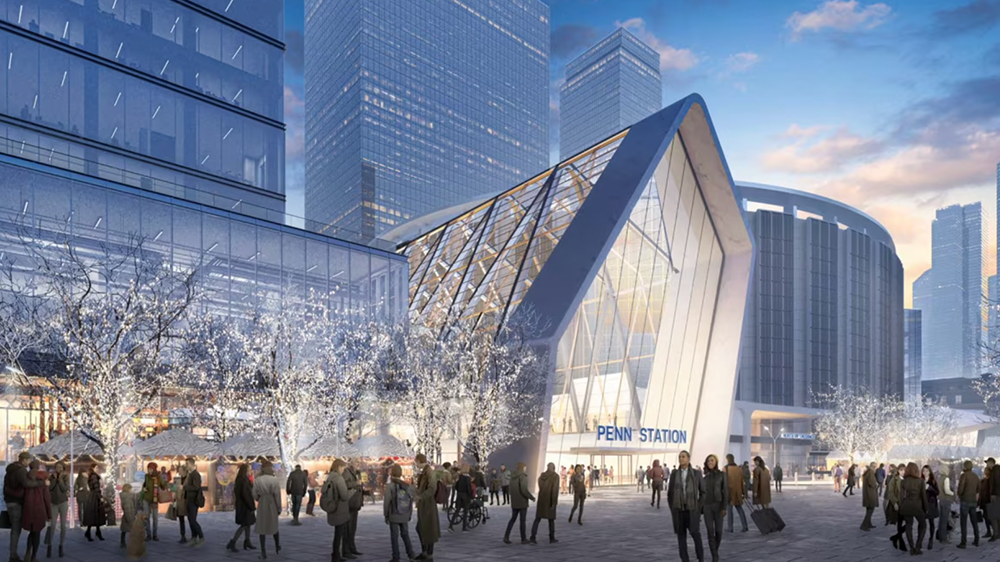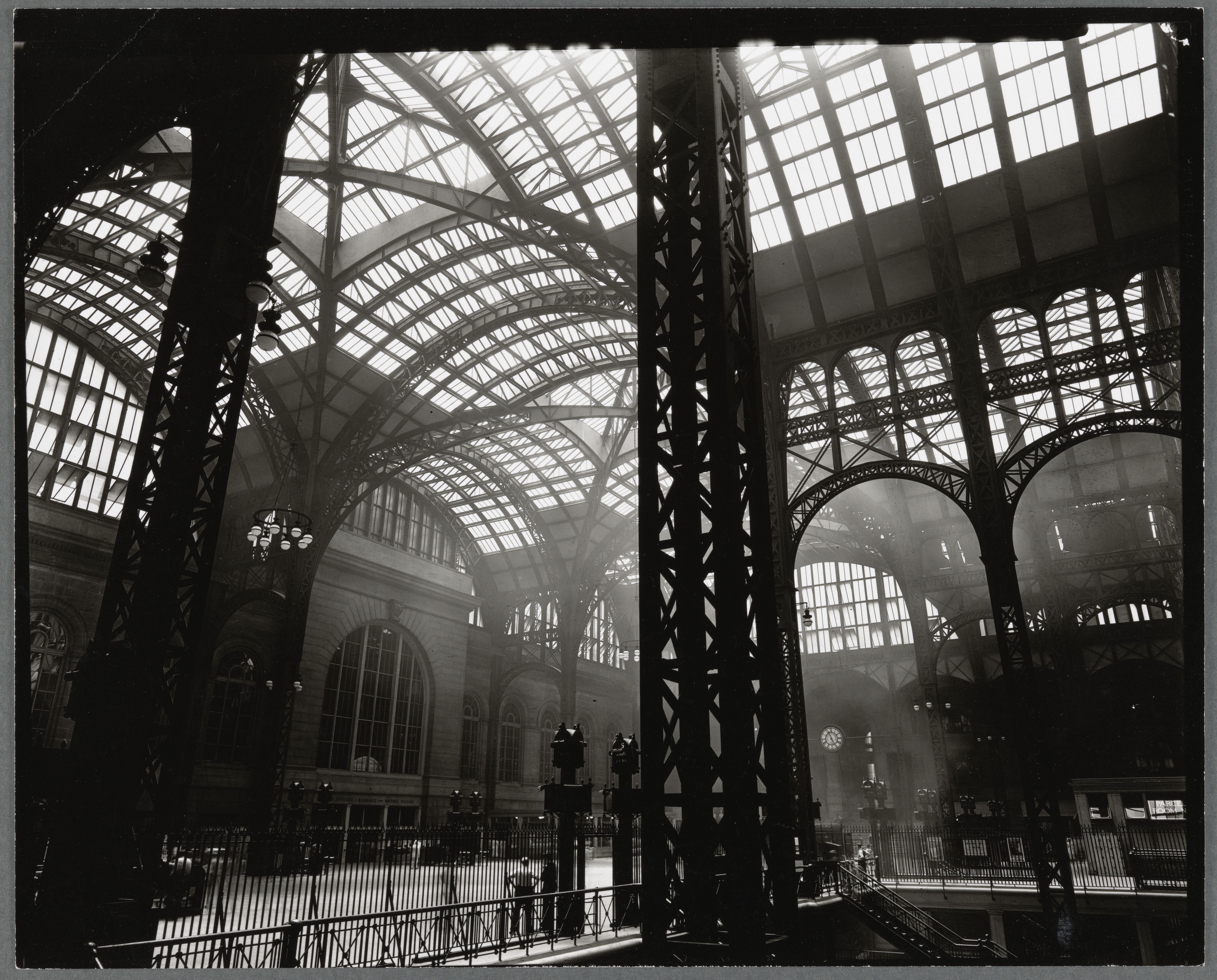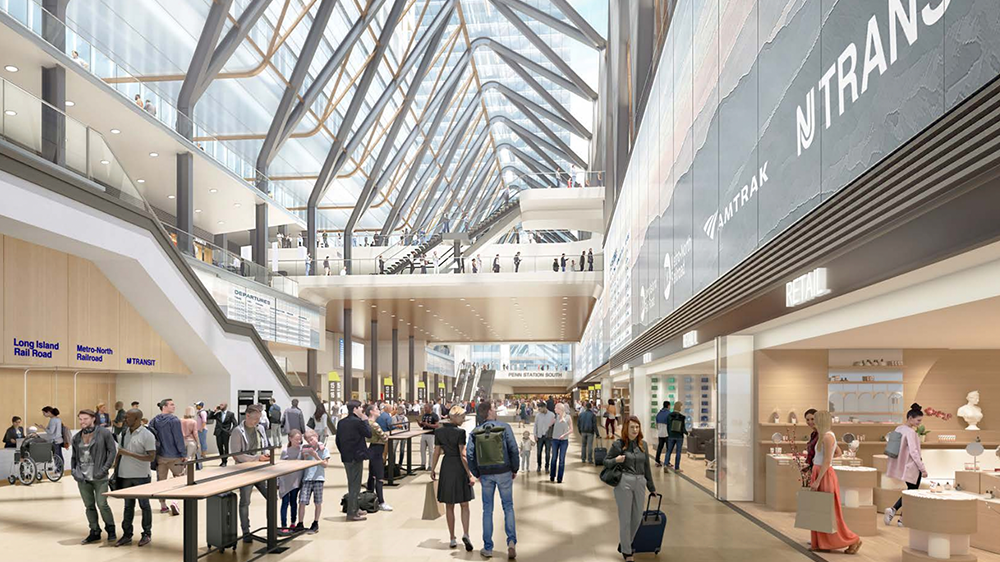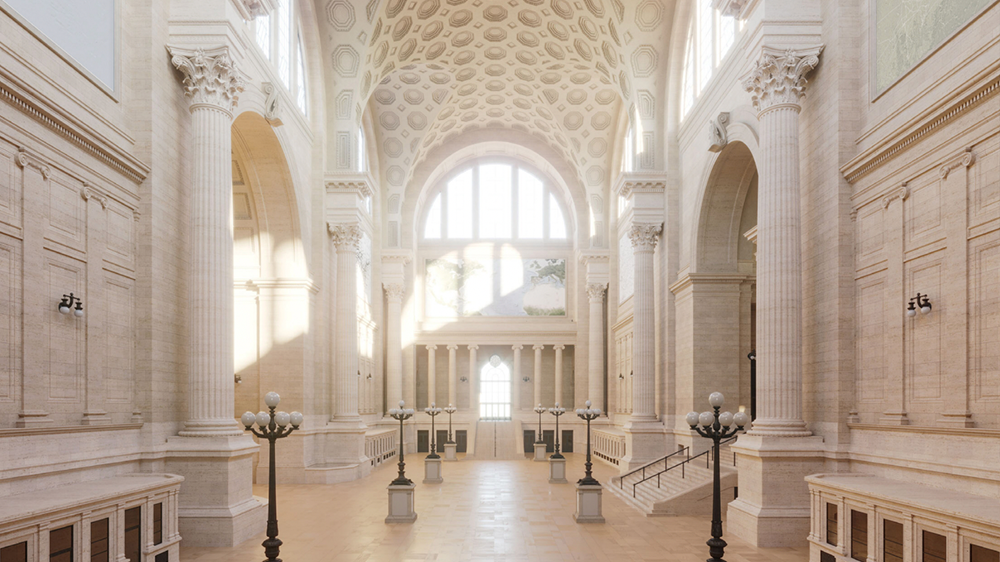The $7BN Plan to Save New York's Most Hated Train Station
- Youtube Views 827,051 VIDEO VIEWS
Video hosted by Fred Mills. This video contains paid promotion for Masterworks.
TAKE a look at any New York City bucket list and you’ll probably find Grand Central. The terminal is known for its stunning architecture, iconic ceiling, and as the second busiest train hub in the city.
Then there’s Penn Station.
With over 600,000 daily passengers at its peak, it's the busiest train station in the western hemisphere – but it isn’t exactly world class.
Its confusing layout, low ceilings and crowded corridors makes it a part of the city that many avoid.
But that’s all about to change. New York has proposed a plan to reconstruct Penn Station and create a first-class transit hub.
The bold overhaul promises to ease the station's current issues, but not everyone is on board with the plans – and as we know with New York City building anything can take extreme amounts of time and money, and especially when it comes to public infrastructure.
This is how one of the world’s biggest cities is planning to turn around its most hated train station.

Above: A rendering of the exterior of the new Penn Station. Image courtesy of New York State Government.
Penn Station may be known as a dark and dilapidated part of the city today, but that wasn’t always the case.
When it first opened way back in 1910 it was actually one of America’s top transit hubs, but that’s because it was an entirely different structure. The original Penn Station spanned 8 acres across midtown Manhattan and was considered an architectural phenomenon.
Known as the ‘standard railway of the world’ at the time, it integrated influences from European design.
The station stood with a coffered ceiling that sat 40 metres above ground supported by 84 giant columns and covered with a canopy of iron and glass.

Above: The original Penn Station. Image courtesy of New York Public Library.
Trains journeyed in and out of the station for decades. But in the 1960s, air and car travel increased in popularity and the railways fell out of fashion.
So as it stood deteriorating and losing money, railroad executives didn’t really think twice to sell the air rights when real estate developers offered USD $50M for the property.
Despite public opposition and protests … down came the old Penn Station. And by 1968 – the new one was complete. This time underground and with a massive new entertainment venue above it: Madison Square Garden.
Gone were the sunbathed halls and striking terminal. The days of being a first rate train station seemed to be over.
Now, over the years, New York has proposed several renovation plans, but nothing has really stuck.
The most progress that’s been made is a nearby station expansion of Moynihan Train Hall.
Then in 2021, New York Governor Kathy Hochul approved a $7BN redevelopment of not only the station, but the entire neighbourhood itself.
It involves replacing the old and cramped multi-level Penn Station with a new 23,200 square metre single level facility.
The idea is that with an improved interior design and more space, the new structure will be able to double its capacity for passenger flow.
It also includes a vast new train hall, the size of Moynihan and Grand Central combined.
Other improvements include expanded retail and dining options, a better ticketing and waiting area, and more elevators, escalators and entrances.

Above: An interior rendering of the new Penn Station. Image courtesy of New York State Government.
And that’s just the renovations to the station itself. Outside the new building a 2,800 square metre public plaza with widened sidewalks and bike areas will be built along with 1,000 additional public housing units.
Ten new skyscrapers surrounding the site have also been proposed, reshaping Manhattan’s skyline but demanding the demolition of several existing apartment and office buildings.
Now that’s a lot of construction for what is a very crowded area. You’ve got a crazy busy train station in the middle of one of the most densely populated areas on earth.
The city hasn’t given many details yet, but here at The B1M we know a thing or two about how things like this get built in busy cities.
Here are just some of the challenges we know the engineers are going to run into at Penn station, based on some of New York’s recent construction exploits:
For one – workers will have to navigate around those busy train schedules, but it's something that can be done.
Take Hudson Yards for example. When skyscrapers were built above an active rail yard, crews had to work within a one to two hour time window to avoid the trains below.
It was a similar deal over on the East Side Access Project where teams kept New York City more or less moving in and around Grand Central Station during the works.
At Penn Station you can likely expect some convoluted walking routes through and between construction hoardings as passengers are rerouted around different phases of the works.
Transporting crew and materials to the construction site in the middle of narrow roads and traffic will also pose some issues and probably upset a lot of people.
Again over at the recently completed East Side Access Project crews travelled and carried in materials on the underground rail lines instead of from the street into the station.
Teams building skyscrapers from street level have often found themselves having to bring in materials in the middle of the night when things are a bit quieter.
And you can’t forget those pesky New York City zoning laws. Empire State Development (ESD) – a key player in the project – will have to override existing land zoning laws in the area to enable construction works to happen.
Current zoning permits less floor space than is typically allowed in other transit hubs in the city. But because of a little law that grants exceptions in areas that are considered ‘blighted and substandard’ – ESD can revise this.
Not included in this multi-billion dollar renovation? A plan to address the congestion of trains themselves by adding more tracks or improved train circulation. That’s something that probably won’t come until much later. And in New York, that’ll mean much later.
For now – the plan serves only as a revitalization effort of the local area and as a way to alleviate passenger flow within the station. For some designers and activists, that’s not enough.
Local advocacy group, ReThink Penn Station, came up with its own design inspired by the original above ground Penn Station, complete with stone columns, iconic vaulted glass, and classical architecture.
But given that it's now the 21st century, it’ll include modernizations like wider track level platforms, newer transit technologies, and an improved circulation plan.

Above: A rendering of an alternative idea for Penn Station renovations. Image courtesy of ReThink Penn Station.
At the moment, the station uses what is known as a terminal system. This means that once a train comes into the station and unloads passengers, it then reverses back out again.
"It should be converted to through running operations, which is the way commuter trains are run in London, Paris, Tokyo, Hong Kong," Samuel Turvey , chairperson of ReThink Penn Station NYC, said.
That means trains would keep moving in the same direction which Rethink Penn Station says will increase efficiency.
To cut construction costs, the group said it would use an automated technique to cut the stone columns, reducing the amount of stone to ⅕ of the original station from 1910 while still recreating the look.
But to rebuild the original overground there’s a bit of a catch. That is – moving Madison Square Garden. It’s something other architects have proposed as well.
"Alex Washburn would rebuild or something akin to Penn Station on probably 40% of the site and put a park on the west side of the site," Turvey said. "The second Vishaan Chakrabarti, has this interesting idea of sheathing the present garden in glass, but getting a much more modern train operation below."
Now MSG was moved, it wouldn't be the first time – in fact it's been relocated three times before. And the arena’s operating permit does expire in 2023. Something the station’s developer has yet to address.
For whatever your position on it, it’s clear the redevelopment of Penn Station is important for many residents, and with such high stakes for the busiest transit hub in the hemisphere, there’s bound to be varying opinions of how it should be improved.
Like most things in New York, it’s going to take more than just engineering to get this project done. There’ll need to be a lot of money and political will too.
Funding for the $7BN project is expected to come from a combination of the MTA, the federal government, Amtrak, New Jersey and property developers.
Remember all those new skyscrapers that are planned for the area? Well, since they’re part of this government-backed renovation, they’d qualify for certain tax breaks.
Instead of paying traditional property taxes on the building, the developers would pay the state of New York directly.
In turn, the government said they’ll use that money to help pay for the renovation of the station and public plaza.
But there’s a problem. The developers are already delaying construction of the new towers because of high interest rates and poor demand for office space.
In February, office occupancy was still roughly half of what it was before the pandemic.
Since the government is banking on money from the developers, any delays in their construction could cause issues getting the funding for the public improvements too.
Still, the city’s plan is seemingly moving forward for now – and despite its critics – the commuter-focused renovation is sure to please many passengers. Only time will tell if it’s enough to make Penn Station the envy of the world once again.
This video contains paid promotion for Masterworks.
Narrated by Fred Mills. Special thanks to Samuel Turvey. Footage and images courtesy of New York State Government, ReThink Penn Station, New York Public Library, Fox 5 New York, CBS New York, The Dronalist, Alex Washburn, Matthew Bain and Vishaan Chakrabarti.
We welcome you sharing our content to inspire others, but please be nice and play by our rules.








